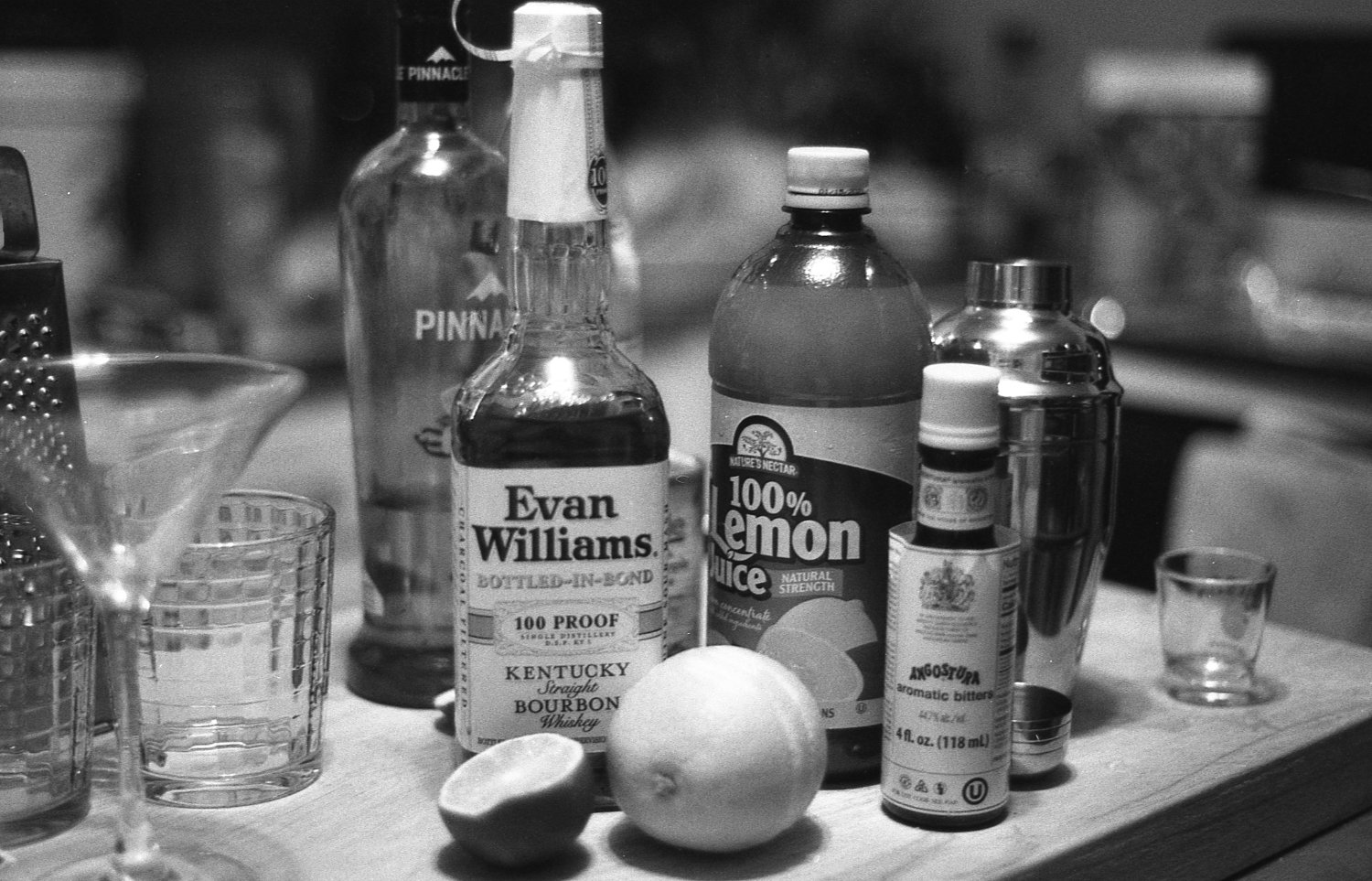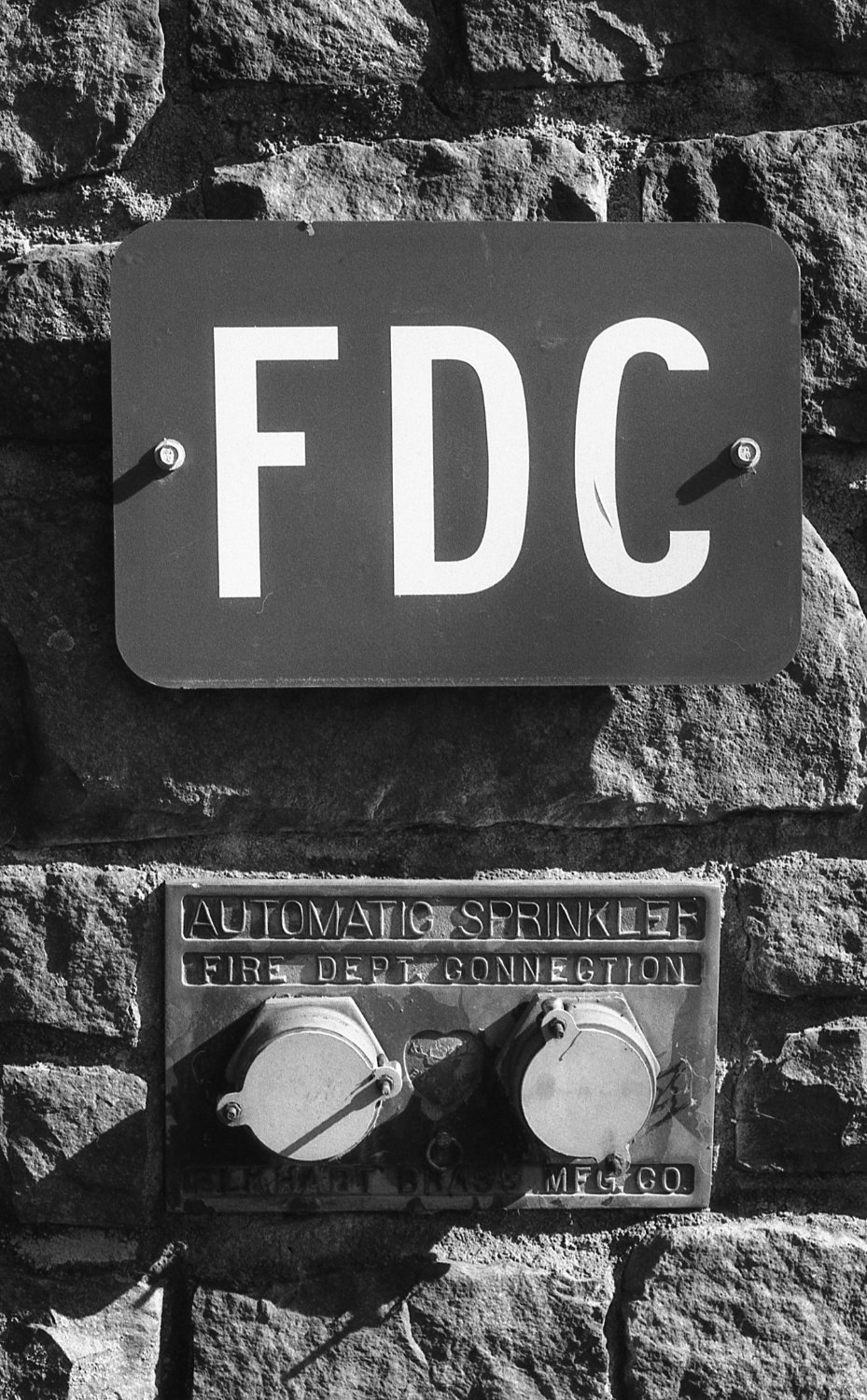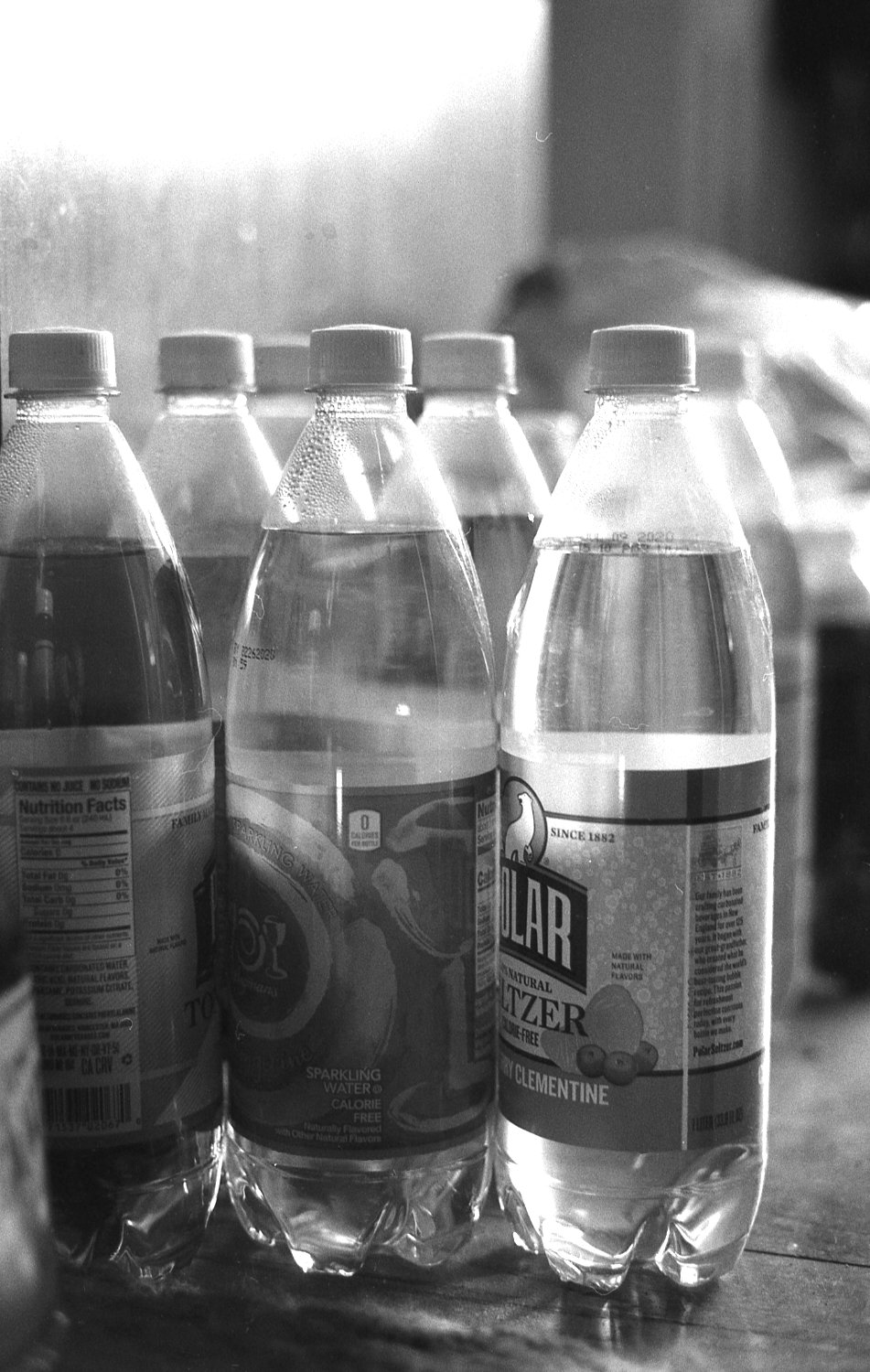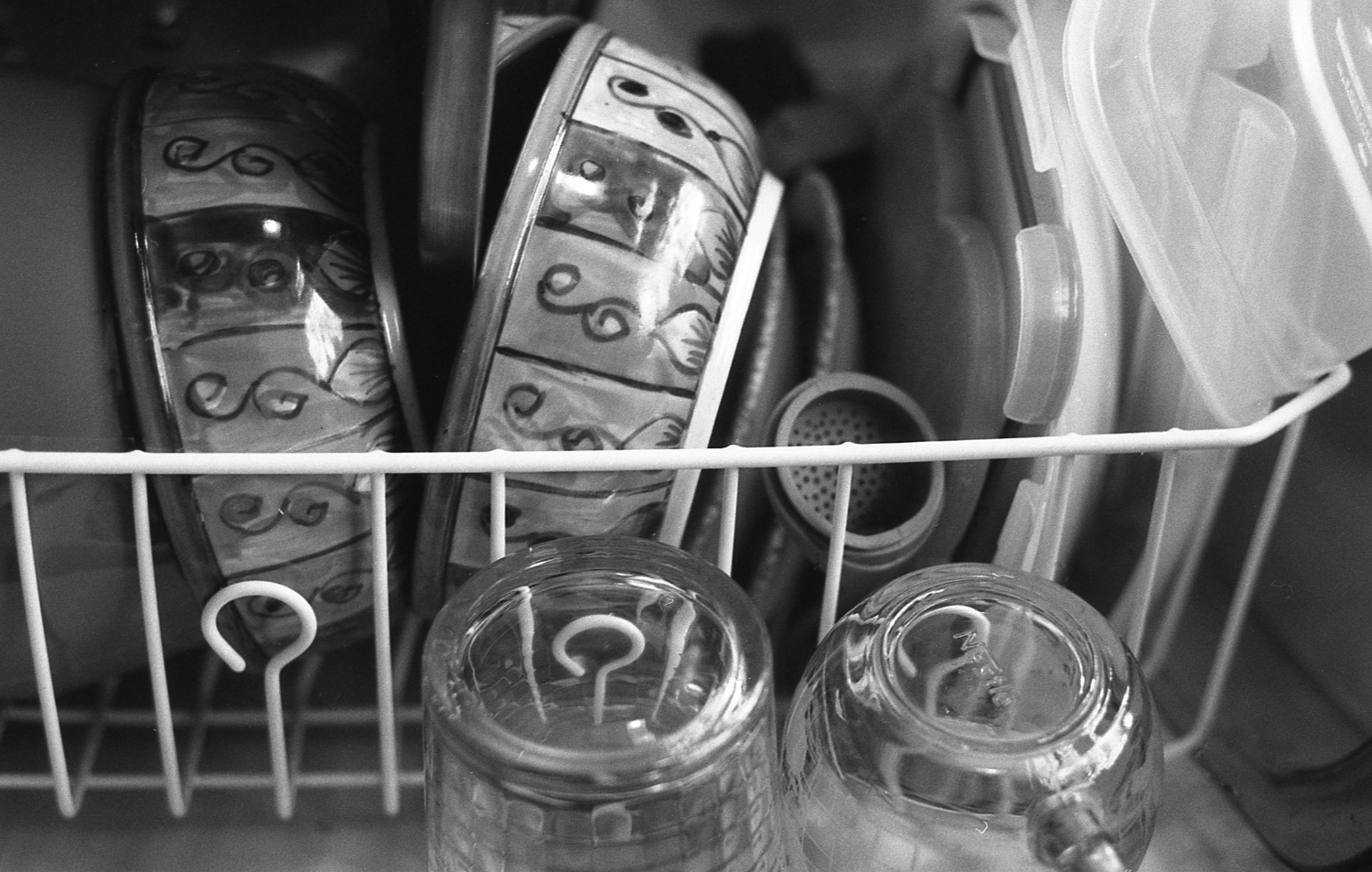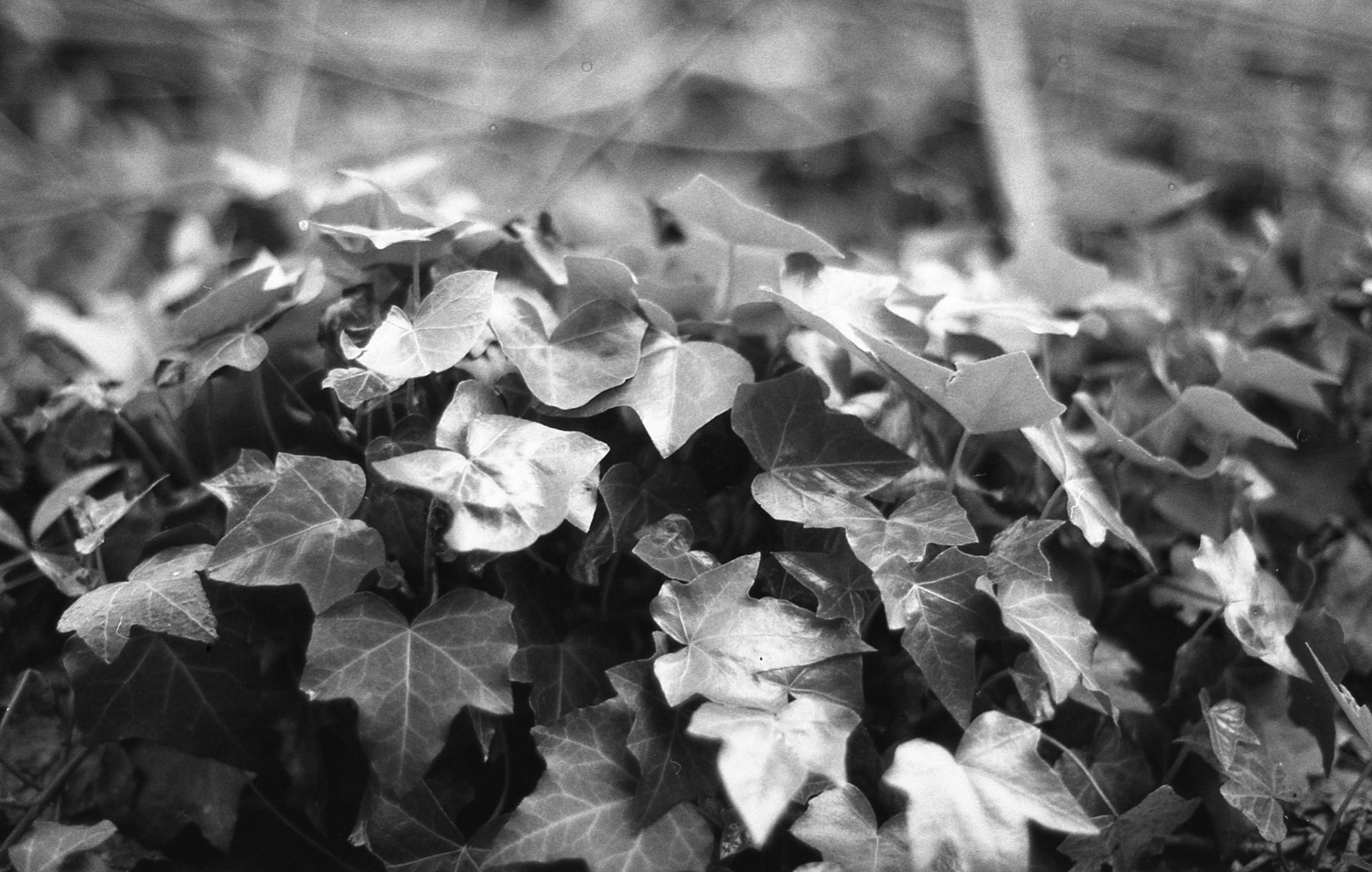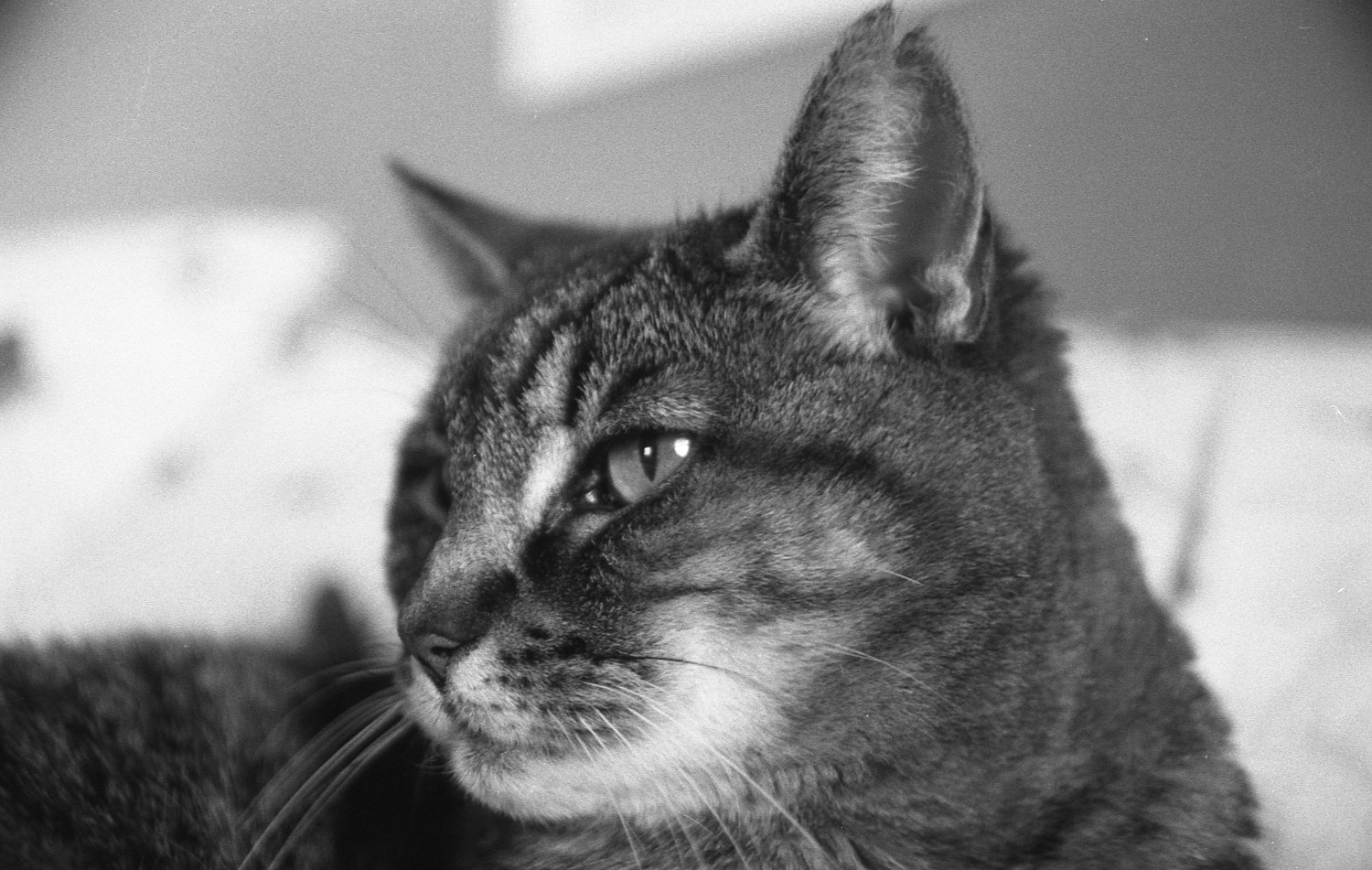For as long as I’ve been taking photos, I’ve always been a astonished by what goes on behind the darkroom door. For me, once I finished a roll of film, it was off to the processor and then waiting to get it back. It was always a goal of mine to learn how to process my own film. And now that goal is one I can check off the list.
The urge to learn this skill really came on after seeing the work my nephew Joe was doing in his high school film classes. On a visit last fall, he and his mom took me to the darkroom at his school (alas, the last one in the school district) and I watched as he and his classmates handled film and prints. I’d read about processing film in my collection of 70s and 80s film photography books (John Hedgecoe, Michael Langford, Joy of Photography, Kodak guides, et. al.) and it seemed like a daunting, expensive, chemical process.
Then I learned of Cinestill’s Df96 monobath processing chemicals. Here was a single-step process that promised black and white negatives with three minutes of processing time. I thought it might be too good to be true, but a lot of what I read online sounded pretty positive. I decided to take the plunge.
A visit to B&H netted the necessary Df96 powdered chemicals, a Patterson developing tank, a changing bag, a chemical container and some negative sleeves. As recommended in many articles, I practiced opening film canisters and loading the film reels, first in daylight where I could see, then in the changing bag. I had several rolls of Ilford HP5 in various cameras, but the shots on those rolls were ones I wanted to leave to the pros, so I needed a test roll to process.
In the freezer was a roll of Kentmere 100 I bought a few years ago and never shot. About the same time, I received a Nikon N70 to try out (that’s a story for another time…let’s just say I found it a joy to shoot!). So, I put the two together, and after COVID lock-down days of Zoom meetings, e-mails and working from the guest room, I shot around the house. This would be the roll — my first roll processed. I finished the roll with two shots of a very patient Binny.
When the time came, I pulled out the changing bag, filled it with the roll of film, the family corkscrew/can opener, my Patterson tank and a pair of scissors. The cartridge opened just like I’d practiced, and although my first trim of the film end didn’t go quite a straight as I’d hoped and I fumbled a bit, I was soon successful in getting the exposed film on the reel and safely into the lightproof tank.
Then, it was off to the basement with a pitcher of Brita-filtered water, a thermometer, a mixing graduate and my Df96 powder. I heated the water to 80º F by putting the container of water into a bowl filled with hot water from the tap. In the graduate, I mixed the two foil bags of powder together, and stirred until it was fully dissolved. Then, it was just a matter of following the instructions.
After mixing the chemicals, I again worked to get the liquid to precisely 80º F as measured by my digital thermometer. I poured the Df96 into the Patterson tank, started a timer, put on the lid, and did the constant agitation method for three minutes, as directed. I poured the Df96 back into its container, rinsed the film as directed, then washed it a little longer. When I was convinced the rinsing was done, I pulled the reel out of the tank, pulled the film off the reel, and was amazed — I had a gorgeous looking negative!
I hung the film from our basement clothesline to let it dry overnight. I need to get some Photo-Flo (wetting agent) to ensure the film dries a little better than it did, but all things considered, I was very happy with the results.
I cut and scanned them to my Epson V550 this morning and was very pleased with the results. The Kentmere dried relatively flat and the Epson did a great job with the scans. I like a punchy black and white image, and that’s what I was getting. I’m not enough of an expert to know if this is the best possible negative, but I was pleased.
I’m now emboldened to do the HP5 rolls that are in camera now. With the Df96, 15 seconds needs to be added to the developing time for each roll you do, and you can do up to 16 rolls with one mix. It works out to less than $1.25/roll to process.
Here are a few of the scans.
I have a feeling this is a gateway to learning about Rodinal and Ilfotec and all those traditional B&W developers. But for now, the Df96 has offered my first taste of processing my own film, and I like it!
